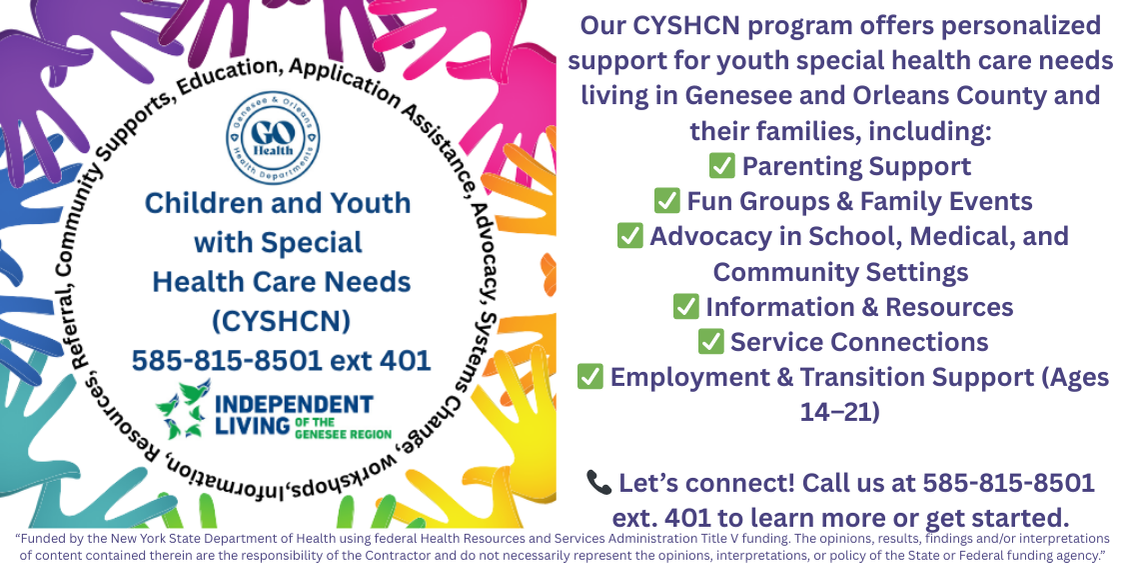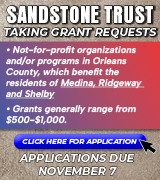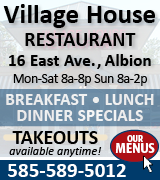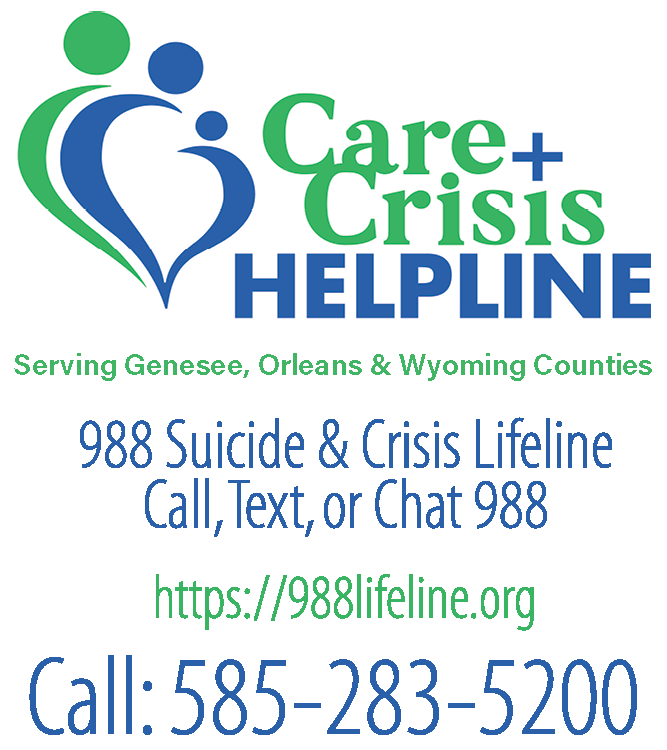Internet gaps in Orleans making it difficult for seniors to sign up for vaccine
Issue highlighted as county tries to build support for expanded broadband coverage
ALBION – Orleans County senior citizens, who are feeling desperate to get an appointment for a Covd-19 vaccine, are struggling to access online websites to sign up, Orleans County Legislature Chairwoman Lynne Johnson said today.
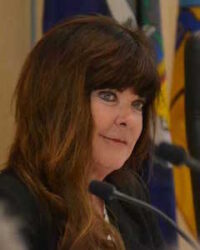
Lynne Johnson
Instead of trying online to register for the vaccine, 500 seniors have instead called the Orleans County Office for the Aging to get on the waiting list.
She highlighted the issue today during a Zoom conference call with Congressman Chris Jacobs, news reporters and members of the Orleans Digital Literacy Initiative Steering Team.
“They dial the Office for the Aging because they don’t have internet or don’t know how to use internet,” Johnson said during the news conference.
In rural Wyoming County, Jacobs said he was told about half of the available vaccines administered in the county have been claimed by people outside Wyoming because that county also struggles with spotty or nonexistent internet service.
Johnson has been working nearly a decade to expand broadband in Orleans County, including by partnering with neighboring Niagara County. Cost estimates to fill the gaps in coverage in the two counties are about $10 million, including $4 million for the areas in Orleans County.
‘This issue (high-speed internet) is critical to the future prosperity of the region. This is the rural electrification of years ago and we need to view it as such.’ – Congressman Chris Jacobs
Orleans hasn’t been unable to make significant progress in expanding the service locally. Johnson said the county has been bypassed by the state and federal governments for funding.
Johnson is optimistic, however, that federal funding soon will be available for the county. She praised the Orleans Digital Literacy Initiative Steering Team for helping to documents the need in the county. That group has received nearly 3,000 surveys from residents, and conducted more than 50 interviews with business and community leaders, which all quantifies the woes of inadequate or nonexistent internet service.
It effects students trying to do homework online, businesses that need to file reports, residents trying to fill out job applications and anyone trying to enjoy a movie through Netflix.
Johnson said about 20 percent of the county does not have high-speed internet service available, and more places have subpar coverage. It’s a major issue as the county tries to retain and attract residents and businesses.

Chris Jacobs
Jacobs thanked the local officials and the Orleans Digital Literacy Initiative Steering Team for their work on a “critically important issue” that he said “cuts across entirety of 27th Congressional District.”
The gaps in coverage has been even more apparent during the Covid-19 pandemic, with more students forced to school remotely at home and more people trying to work from their residence.
One issue to resolve in Orleans is a clear data map that shows where coverage doesn’t exist in the county, and current addresses where it needs to be upgraded. Johnson said local officials have gone house by house and have showed 20 percent doesn’t have access to the service.
That differs from state maps which put coverage at about 98 percent. That’s because if one house in a census block has high-speed internet, the state considers that block covered, Johnson said.
Jacobs said he will be pressing the Public Service Commission at the state to provide accurate data maps about where the service isn’t currently available.
“This issue is critical to the future prosperity of the region,” Jacobs said. “This is the rural electrification of years ago and we need to view it as such.”
In Orleans County, nearly 3,000 people have already completed online surveys in English or Spanish about their internet needs and current service. There are also printed surveys at local libraries and some non-profit agencies.
The survey will remain available until the end of February. The Steering Committee welcomes more feedback from residents through the surveys.
“The more people that fill out the survey, the more accurate data will be and we can make a more compelling case,” Jacobs said.
The Steering Committee also is moving to a solutions phase and already has about 250 people committed to 2-hour sessions to help brainstorm solutions, said Mary Beth Debus, a consultant hired to assist the county with the project, which is led by the Orleans County United Way.
The response from the survey and the commitment to attend the sessions shows the widespread support and determination from residents and community leaders to improve the situation, Debus told Jacobs.
Dean Bellack, executive director of the United Way, told Jacobs the county needs more than just expanded connectivity with high-speed internet. Many people, including seniors, lack expertise to use the service and devices.
The Steering Committee is looking to have trained people available to help people use technology, including telemedicine services. The county may also want to look at technology literacy camps, including for youths, Bellack said.
“These are some of the hundred different ideas we’re putting together,” he said.
Here are some other highlights from the survey so far:
- 81% of Orleans County residents who do not have internet at home (15% of respondents) do not have an option for getting internet because it isn’t available to them.
- When asked how reliable their internet is, only 23% said it was very reliable. A larger percentage (27%) described it as spotty or not working well at all. (The remaining said they had occasional problems.)
- 78% said that they experience problems if there are multiple devices being used at the same time.
- 35% of residents need to always, often, or sometimes leave their homes in order to do activities on the internet.
- One in five students is having trouble using the device their school provided them.
- 32% of students do not have an adult in the house who can help them with their technology needs.
- 59% of respondents could work from home all or part of the time.
- 67% of respondents have been asked to work from home all or part of the time by their employers but 12% of them were unable to. 60% of those who did encountered poor and/or slow connectivity.
- About 15% of job seekers are having trouble with digital literacy interfering with job search process (filling out job applications, using email, etc.)







